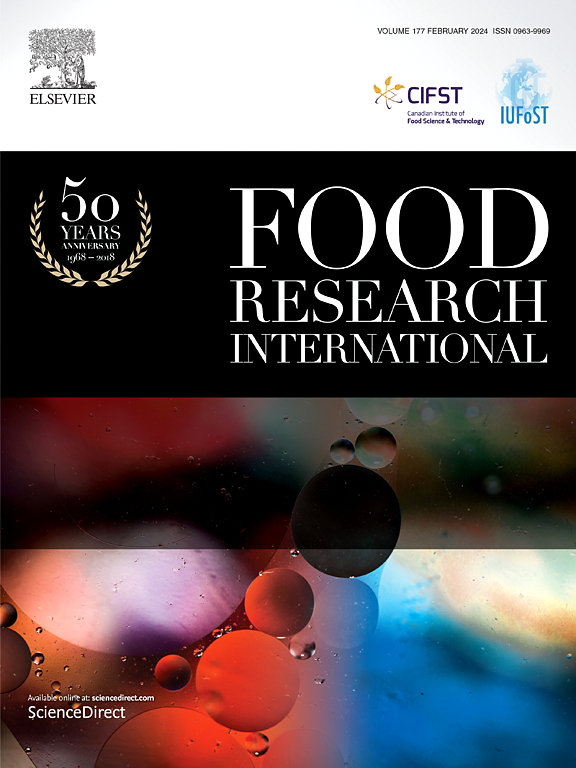Molecular interactions and binding mechanisms of the homogalacturonan and rhamnogalacturonan-I fractions of pectin and different anthocyanins
IF 7
1区 农林科学
Q1 FOOD SCIENCE & TECHNOLOGY
引用次数: 0
Abstract
This study investigated the interactions between different structural regional fractions of pectin, specifically homogalacturonan (HG) and rhamnogalacturonan-I (RG-I) fractions, and three anthocyanin monomers: cyanidin-3-O-glucoside (C3G), peonidin-3-O-glucoside (P3G), and pelargonidin-3-O-malonylglucoside (P3M). The binding ratios, physicochemical and structural characteristics of these pectin-anthocyanin complexes, and their binding mechanisms were analyzed. The HG fraction exhibited the highest binding ratio with C3G. Zeta potential and particle size analyses indicated that the HG fraction had a significantly higher negative charge compared to RG-І at pH 3.7, and the complexes exhibited an increase in particle size relative to the individual pectin fractions. Furthermore, data from 1H NMR and isothermal titration calorimetry (ITC) confirmed that hydrogen bonding, electrostatic interactions, and hydrophobic interactions primarily facilitated the binding interactions. In the binding interactions involving HG/RG-І and C3G/P3G, the Δδmax, binding constant, and Gibbs free energy (ΔG) of the HG fraction were greater than those of the RG-І fraction, while C3G exhibited stronger binding characteristics than P3G. However, the RG-І fraction demonstrated stronger binding to P3M than to HG. The interactions between pectin and anthocyanins are highly dependent on the structural characteristics of both components. These results offer further insights into the interactions between pectin fractions and anthocyanins at the molecular level.

果胶中的同聚半乳糖醛酸和鼠李糖半乳糖醛酸-I 部分与不同花青素的分子相互作用和结合机制
本文章由计算机程序翻译,如有差异,请以英文原文为准。
求助全文
约1分钟内获得全文
求助全文
来源期刊

Food Research International
工程技术-食品科技
CiteScore
12.50
自引率
7.40%
发文量
1183
审稿时长
79 days
期刊介绍:
Food Research International serves as a rapid dissemination platform for significant and impactful research in food science, technology, engineering, and nutrition. The journal focuses on publishing novel, high-quality, and high-impact review papers, original research papers, and letters to the editors across various disciplines in the science and technology of food. Additionally, it follows a policy of publishing special issues on topical and emergent subjects in food research or related areas. Selected, peer-reviewed papers from scientific meetings, workshops, and conferences on the science, technology, and engineering of foods are also featured in special issues.
 求助内容:
求助内容: 应助结果提醒方式:
应助结果提醒方式:


